8 Different Types of Japanese Swords: From Katana to Tachi
Japanese swords come in various types, differing in size, shape, and usage. Some popular types include the katana, a single-edged sword associated with samurai; the tachi, a long curved sword used by cavalry; the wakizashi, a medium-sized sword often paired with a katana; the tantō, a small knife-sized sword; and the uchigatana, a close combat sword developed from the tachi
Types of Traditional Japanese Swords
There are several types of traditional Japanese swords, each with unique characteristics and purposes. Some of the most well-known types include:
- Katana: A long, curved, single-edged sword primarily used by samurai. It typically has a blade length of 60-73 cm (24-29 inches) and is known for its sharpness and cutting ability.
- Wakizashi: A shorter sword, often used as a companion to the katana. It has a blade length of 30-60 cm (12-24 inches) and was used for close-quarters combat or ritual purposes, such as seppuku.
- Tanto: A dagger or knife with a blade length of 15-30 cm (6-12 inches), often used for self-defense, close combat, or as a utility tool.
- Tachi: A predecessor to the katana, the tachi is a longer, more curved sword with a blade length of 70-80 cm (28-31 inches). It was primarily used by cavalry and is often worn with the cutting edge facing down.
- Nodachi or Odachi: A large, two-handed sword with a blade length of 90-100 cm (35-39 inches) or even longer. It was used for battlefield combat against infantry and cavalry, and its size made it difficult to wield.
- Nagamaki: A sword with a long handle and a blade length similar to the katana or tachi. The extended handle allowed for greater leverage and power in combat.
- Naginata: A pole weapon with a curved, single-edged blade at the end. It was often used by foot soldiers, warrior monks, and female samurai for its versatility and reach.
- Yari: A spear with a straight, double-edged blade. It was used for thrusting and was popular among samurai and foot soldiers.
These are some of the main types, but there are variations and subtypes within each category and other less-common sword types. Japanese swordsmiths were known for their craftsmanship and attention to detail, and as a result, there is a wide variety of sword styles and designs throughout Japanese history.
Katana: The Iconic Samurai Sword
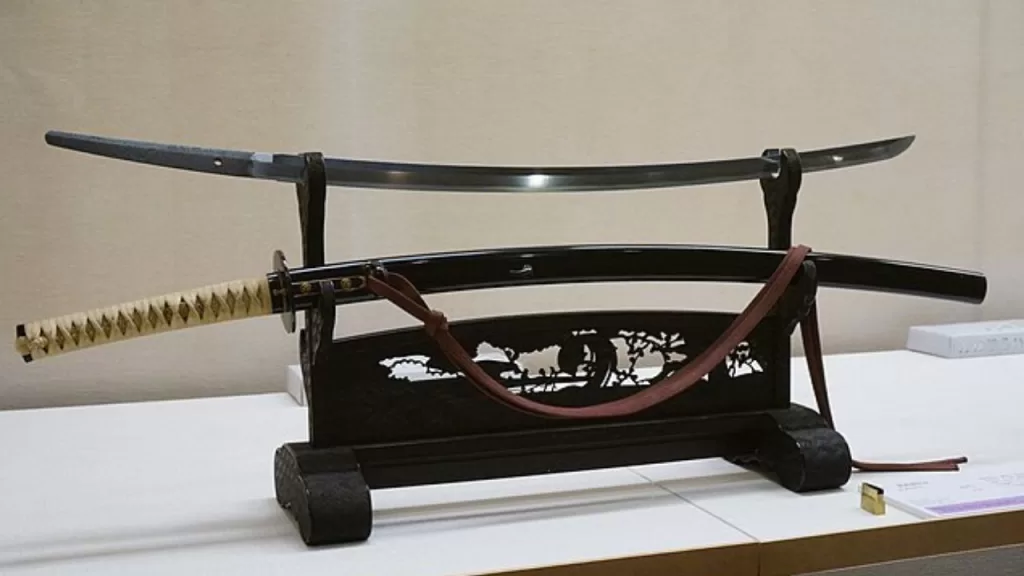
Katana Historical Background
The katana is a Japanese sword characterized by a curved, single-edged blade with a circular or squared guard and a long grip accommodating two hands. Developed later than the tachi, samurai used it in feudal Japan and worn with the edge facing upward.
The forging of a Japanese sword is a subtle and careful process. This art has developed over the centuries as much in response to stylistic and aesthetic considerations as to technical improvements.
Description of Katana
The katana is generally defined as a standard-sized, moderately curved Japanese sword with a blade length greater than 60.6 cm (23.86 inches). It is characterized by its distinctive appearance: a curved, slender, single-edged blade with a circular or squared guard and a long grip to accommodate two hands.
The Japanese sword combines unbreakability, rigidity, and lethal cutting power, and it is in resolving these conflicting practical requirements that it emerges as a triumph of the forger’s art.
Movies, Anime, and Characters Wielding Katanas
The Katana has become a symbol of the samurai and Japanese culture, making numerous appearances in popular culture across movies, anime, and video games.
Movies
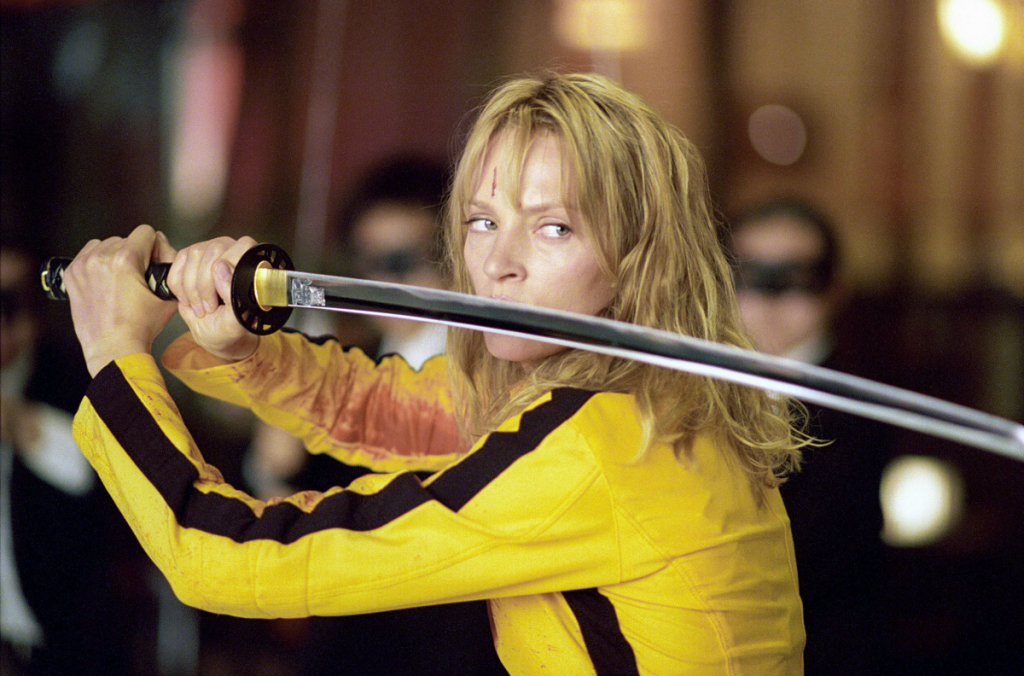
- In the film “Kill Bill,” the protagonist, Beatrix Kiddo, wields a Hattori Hanzo Katana, showcasing its deadly precision and effectiveness.
Anime
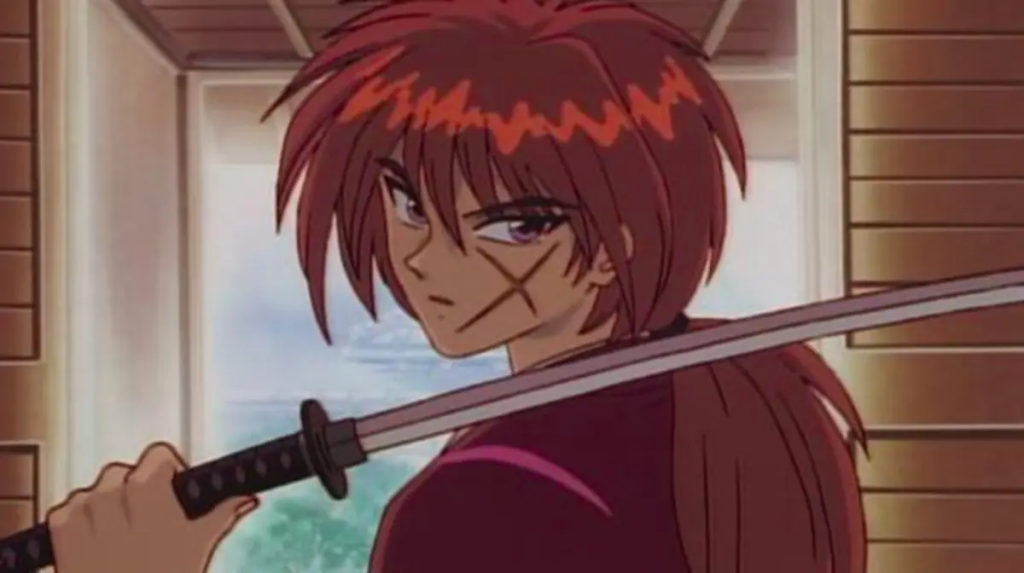
- The iconic anime and manga series “Rurouni Kenshin” features the titular character, Himura Kenshin, wielding a reverse-blade Katana (Sakabato) that reflects his vow not to kill.
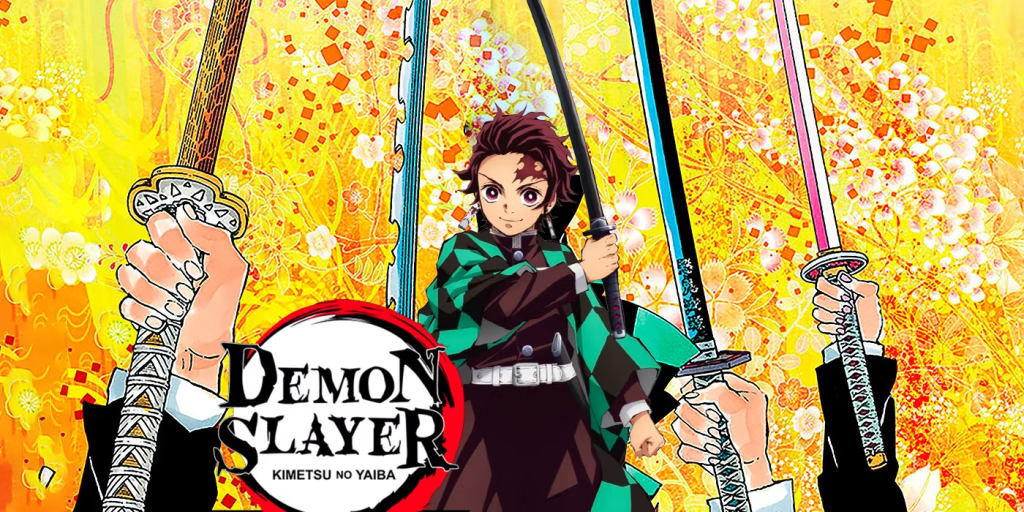
- Similarly, “Demon Slayer: Kimetsu no Yaiba,” a popular anime and manga series, features characters using Katanas imbued with unique abilities to battle demons.
Video Game
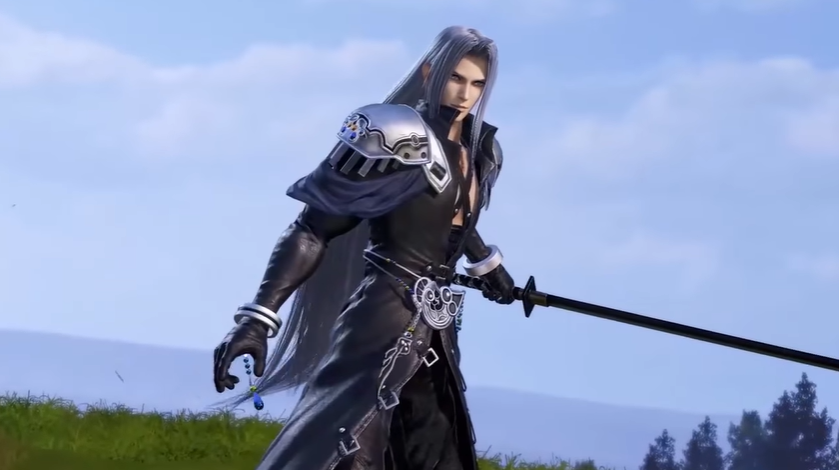
- The character Sephiroth from the “Final Fantasy” video game series is known for his exceptionally long Katana called Masamune, symbolizing his power and status.
The Katana’s prevalence in popular culture has solidified its status as a revered and influential weapon in Japanese history and beyond.
Types of Katana Variations
Several Katana variations have been developed over time, with each type featuring unique characteristics to serve specific purposes or preferences.
Notable variations include:
Shobu Zukuri
Has an irregular curvature and an elegant, iris leaf-shaped point, offering a refined aesthetic and enhanced cutting ability.
Kissaki Moro-Ha Zukuri
Has a double-edged tip designed for improved thrusting capabilities.
Shinogi Zukuri
Characterized by a distinct ridge (shinogi) running down the center of the blade, providing structural strength and a clear separation between the blade’s flat section (shinogi-ji) and its cutting edge (ha).
Unokubi Zukuri
With a blade tapering in thickness toward the tip for better balance, and the Tanto-style Katana, featuring a straighter, shorter blade inspired by the Tanto dagger. These blade designs demonstrate the versatility and adaptability of the Katana to various combat situations and preferences.
Katana Usage and Technique
Samurai in feudal Japan primarily used the katana for cutting and slashing techniques—the long grip allowed for two-handed use, providing greater control and power in combat. In addition, the curved blade facilitated drawing the sword quickly and efficiently, making it an effective weapon for offense and defense.
Notable Katana Masters or Schools
There are numerous schools and masters dedicated to the art of Japanese swordsmanship, many of which focus on using the katana. Some of the most renowned schools include the Toyama Ryu, which focuses on the practical application of the katana, and the Yagyu Shinkage Ryu. This school emphasizes strategy and technique in sword fighting.
Katana Preservation and Modern Practice
The katana is still used in various martial arts, such as kendo, iaido, and kenjutsu. These martial arts focus on swordsmanship’s discipline, technique, and spiritual aspects, preserving the traditional skills and knowledge associated with the katana.
Wakizashi: The Short Sword with A Long History
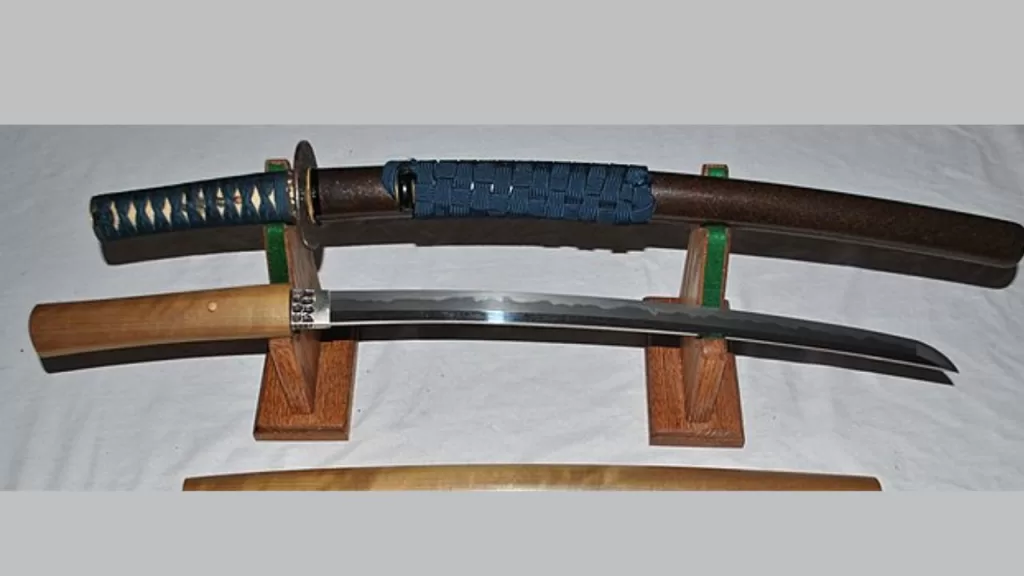
Wakizashi Historical Background
The wakizashi is a traditional Japanese sword often used as a companion weapon to the katana by samurai warriors. It is shorter than the katana, with a blade length typically between 30 and 60 centimeters. The wakizashi was primarily used for close-quarters combat and as a backup weapon when the katana was not practical or available.
Description of Wakizashi
The wakizashi features a curved, single-edged blade similar to the katana but with a shorter length and a slightly different curvature. The sword has a circular or squared guard and a grip designed for one-handed use. The wakizashi was often worn alongside the katana, with both swords being referred to as a daisho, which translates to “big-little.”
Wakizashi in Popular Culture
While not as prominent as the Katana in popular culture, the Wakizashi has appeared in movies, anime, and video games. Some instances where the Wakizashi is featured include:
Movies
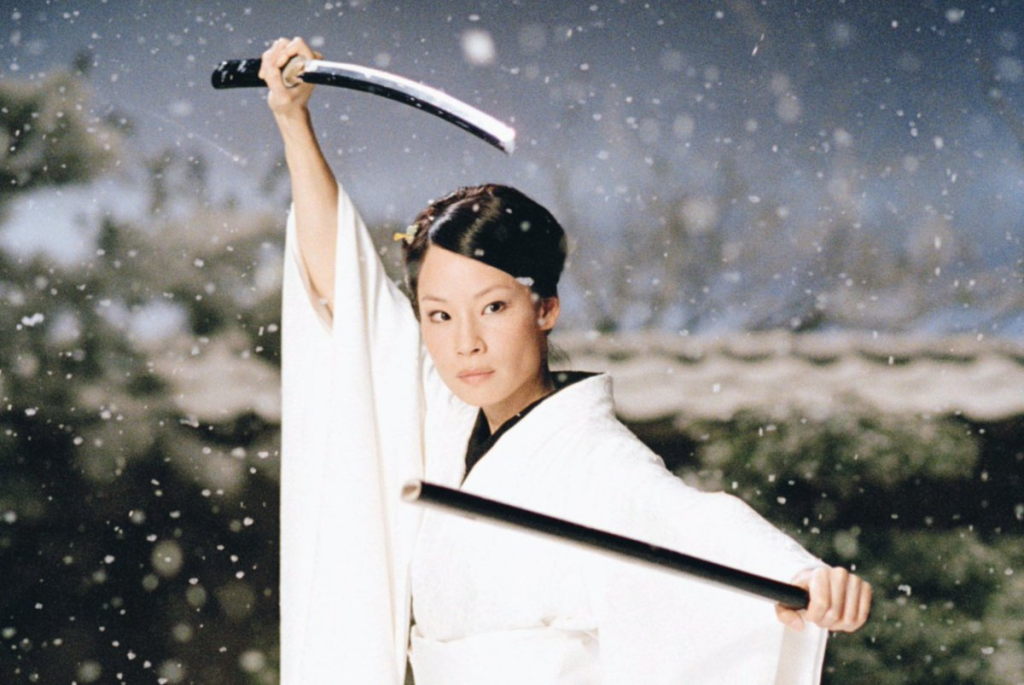
- “Kill Bill” (film series): The character O-Ren Ishii, portrayed by Lucy Liu, wields a Wakizashi alongside her Katana during the final battle against The Bride.
Anime
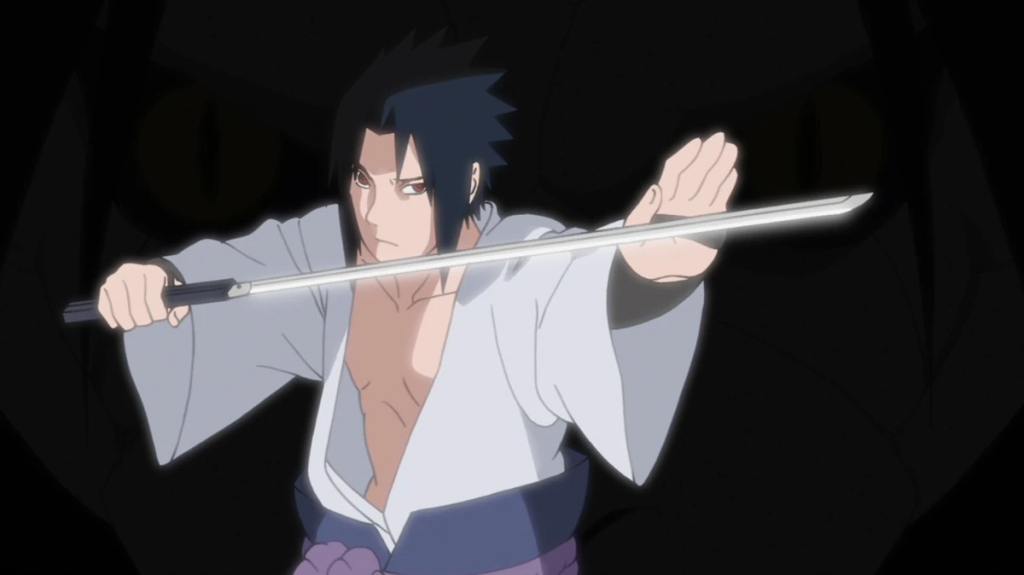
- “Naruto” (manga and anime series): Sasuke Uchiha, one of the main characters, uses a Wakizashi as his secondary weapon during various battles and missions.

- “Samurai Champloo” (anime series): Jin, a skilled samurai, occasionally uses a Wakizashi in addition to his Katana during combat.
Video Games

- “Sekiro: Shadows Die Twice” (video game): The player character, Wolf, utilizes a Wakizashi called “Kusabimaru” as one of his primary weapons throughout the game.
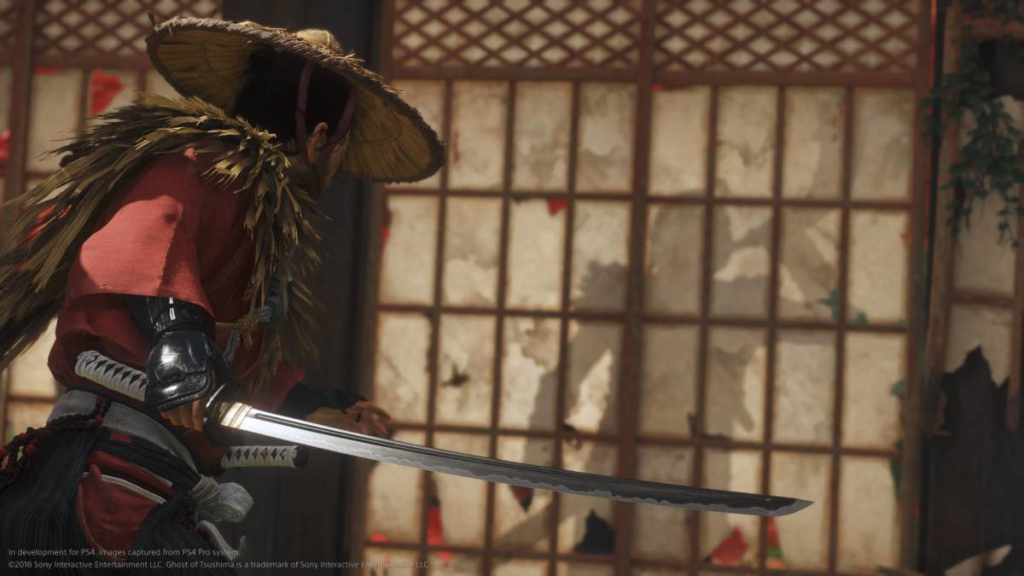
- “Ghost of Tsushima” (video game): The main character, Jin Sakai, can wield a Wakizashi called the “Sakai Tanto” as a secondary weapon for stealth takedowns and close-quarters combat.
Types of Wakizashi Variations
Wakizashi swords come in various forms, each with unique features that cater to different purposes or stylistic preferences. Some of the most notable variations include:
Shobu Zukuri Wakizashi
This variation of the Wakizashi has a blade with an irregular curvature and an elegant, iris leaf-shaped tip. The ridgeless design gives it a more streamlined appearance and enhances its cutting ability.
Hirazukuri Wakizashi
The Hirazukuri Wakizashi features a flat, ridgeless blade with a broad cutting edge and a gentle curvature. This design emphasizes the sword’s cutting capabilities, making it suitable for close-range combat.
Moroha Zukuri Wakizashi
The Moroha Zukuri variation has a unique double-edged blade that provides cutting and thrusting capabilities. This design increases the versatility of the Wakizashi, allowing the wielder to adapt to various combat situations.
Wakizashi Usage and Technique
The wakizashi was used for close-quarters combat and ceremonial purposes such as seppuku, a form of ritual suicide by disembowelment. Samurai warriors would also use the wakizashi for indoor fighting, where the longer katana might be impractical or unwieldy. In addition, the shorter length of the wakizashi allowed for greater maneuverability and precision in tight spaces.
Wakizashi Preservation and Modern Practice
Today, the wakizashi is still used in various martial arts, such as iaido and kenjutsu, which focus on swordsmanship’s discipline, technique, and spiritual aspects. Practitioners of these martial arts often train with the katana and wakizashi to develop a comprehensive understanding of traditional Japanese sword fighting techniques.
Tanto: The Deadly Dagger
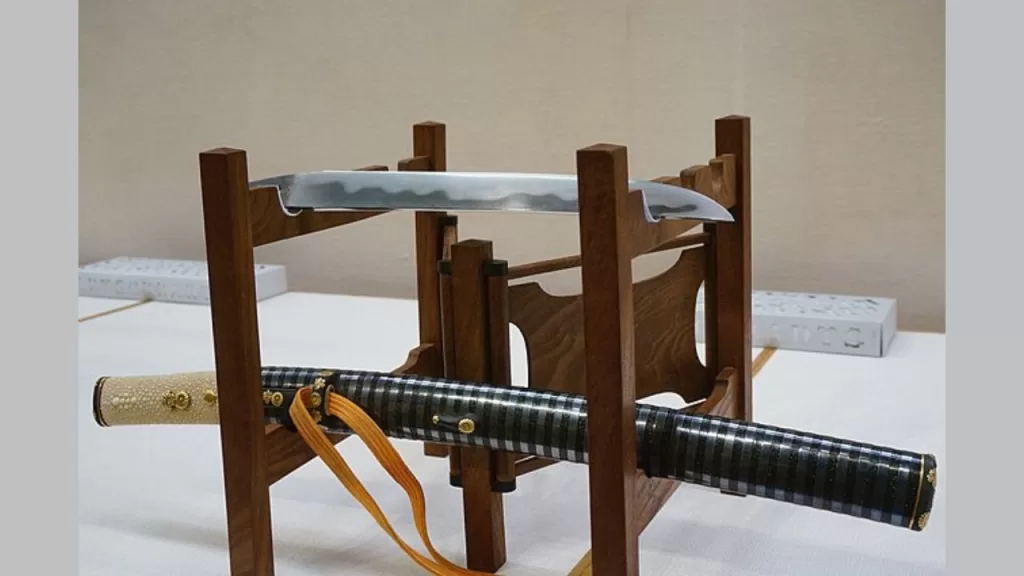
Tanto Historical Background
The tanto is a traditional Japanese short sword or dagger that dates back to the Heian period. Samurai warriors often used it as a secondary weapon, alongside the katana or wakizashi. The tanto was primarily designed for stabbing and thrusting techniques, making it an effective close-quarters weapon.
Description of Tanto
The tanto features a straight or slightly curved, single-edged blade less than 30 centimeters long. The sword has a simple guard and a grip designed for one-handed use. The tanto’s compact size and sharp point made it an ideal weapon for piercing armor and dispatching enemies in close combat.
Popular Culture Featuring the Tanto
The Tanto, a traditional Japanese dagger, has appeared in movies, anime, and video games. Characters who use the Tanto as a weapon or tool include:
Movies
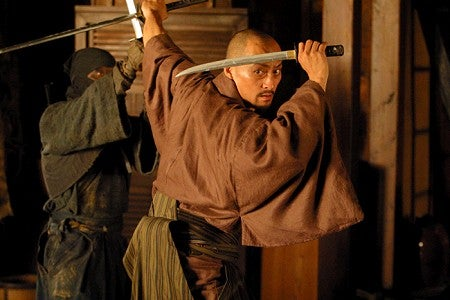
- “The Last Samurai” (film): The character Katsumoto, portrayed by Ken Watanabe, uses a Tanto during his final act of seppuku.
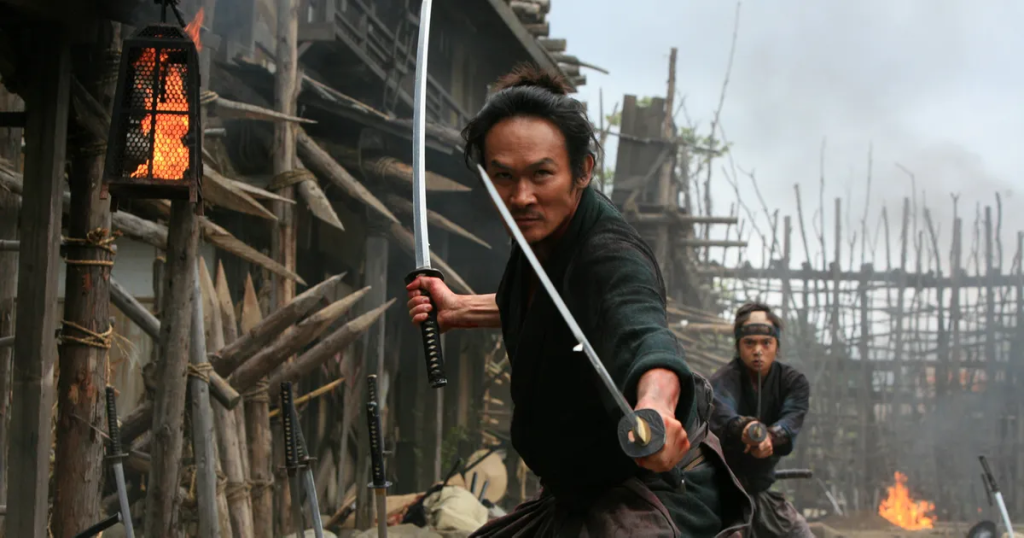
- “13 Assassins” (film): Several characters in this samurai movie wield Tanto for close-quarters combat and stealth assassinations.
Anime
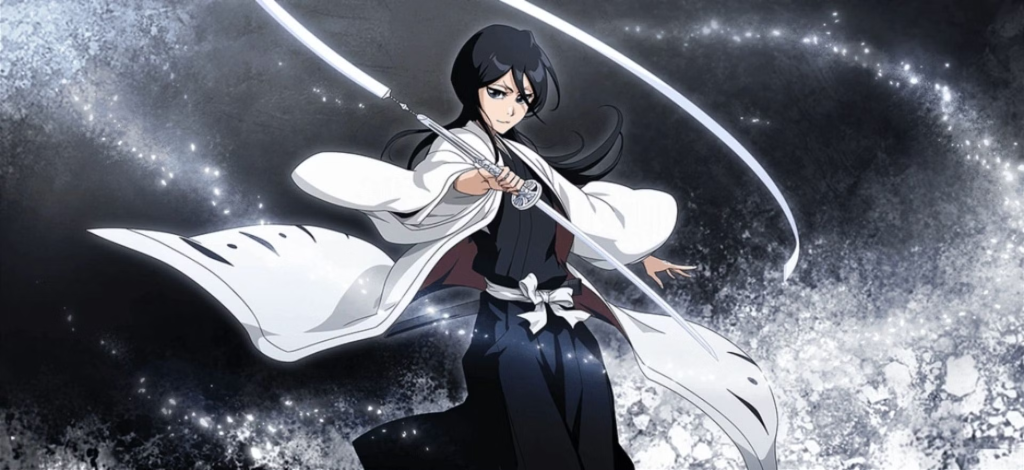
- “Rurouni Kenshin” (manga and anime series): The character Shinomori Aoshi, a skilled swordsman, uses a pair of Tanto called Kodachi Nitōryū as his primary weapons.
- “Bleach” (anime and manga series): Rukia Kuchiki wields a Tanto-like Zanpakuto named Sode no Shirayuki.
Video Games

- “Ninja Gaiden” (video game series): Ryu Hayabusa uses a Tanto as a secondary weapon for close-range combat and stealth assassinations.
- “Assassin’s Creed: Memories” (video game): The Tanto is a weapon choice for players, offering swift and deadly attacks in close combat.
Types of Tanto Variations
Tanto swords come in various designs, each with unique characteristics tailored to specific needs or preferences. Some notable variations include:
Hira Zukuri Tanto
This variation features a flat, ridgeless blade that prioritizes cutting capabilities. The absence of a ridge provides a sleek appearance, and its design is suitable for slashing and stabbing techniques.
Shobu Zukuri Tanto
The Shobu Zukuri Tanto has a blade with an irregular curvature and a distinctive iris leaf-shaped tip. This design enhances the Tanto’s cutting ability and provides a more fluid movement.
Moroha Zukuri Tanto
This double-edged Tanto variation offers both cutting and thrusting capabilities. Its versatile design allows the wielder to adapt to various combat situations, making it a popular choice among warriors and martial artists.
Kissaki Moro-Ha Zukuri Tanto
This Tanto variation features a double-edged tip that increases its thrusting capabilities. In addition, the blade’s design also emphasizes penetration, making it suitable for piercing through armor or other protective materials.
Tanto Usage and Technique
The tanto was primarily used for stabbing and thrusting techniques, making it an effective weapon for close-quarters combat. In addition, Samurai warriors often carried the tanto as a backup weapon, using it when their primary weapon was not practical or available. Finally, the tanto was also used for ceremonial purposes, such as ritual suicide, or as a status symbol.
Tachi: The Sword of Ceremony

Tachi Historical Background
The tachi is a traditional Japanese sword that predates the katana, originating in the late Heian period. It was the primary weapon of samurai warriors before the katana gained prominence. The tachi was designed for use on horseback, with its longer and more curved blade making it suitable for slashing attacks against infantry.
Tachi in Popular Culture
Though not as widely featured as the Katana, the Tachi has appeared in various forms of popular culture, including movies, anime, and video games. Some examples of the Tachi’s presence in popular culture are:
Movies
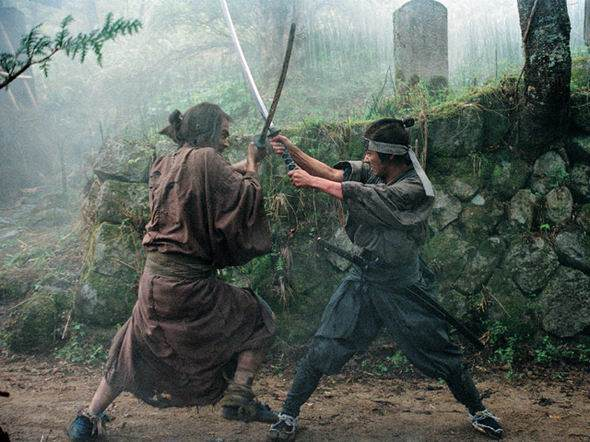
- “The Hidden Blade” (film): Set in the Edo period, the protagonist Munezo Katagiri, portrayed by Masatoshi Nagase, wields a Tachi as his primary weapon.
Anime
- “Sword Art Online” (manga and anime series): Heathcliff uses a Tachi as his primary weapon, showcasing its elegant design and combat capabilities.
- “Bleach” (manga and anime series): The character Sajin Komamura, a captain in the Gotei 13, wields a Tachi called “Tenken,” which transforms into a massive, cleaver-like blade.
Video Games
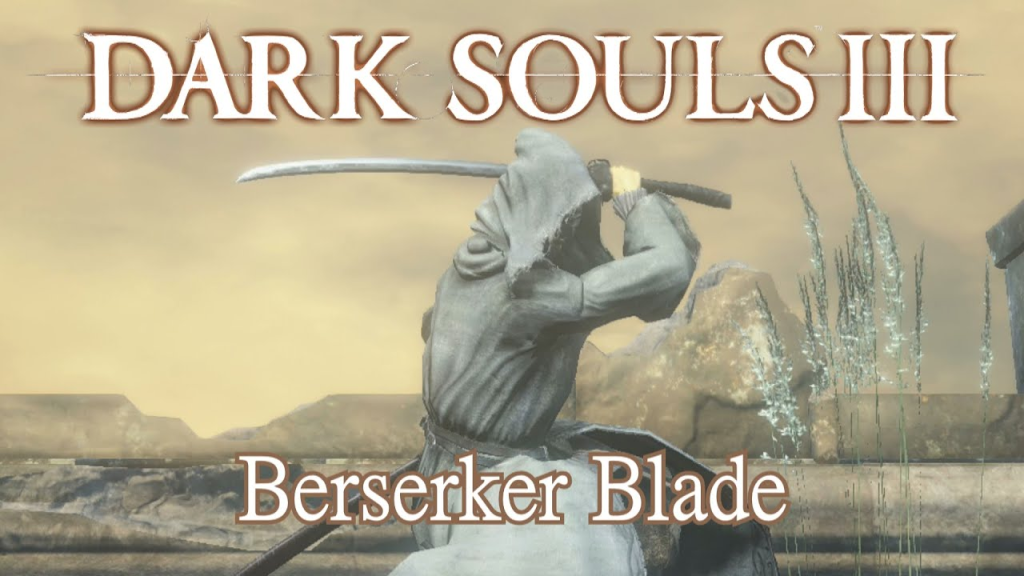
- “Nioh 2” (video game): Players can wield a Tachi as one of their primary weapons, experiencing its distinct characteristics and combat style.
- “Dark Souls III” (video game): The “Black Blade” is a Tachi-inspired weapon that players can obtain, offering a unique move set and powerful attacks.
Description of Tachi
The tachi features a curved, single-edged blade typically longer than the katana, with a length ranging from 70 to 80 centimeters. The sword has a circular or squared guard and a grip designed for two-handed use. The tachi was often worn edge-down, suspended from the belt by cords, distinguishing it from the katana, which was worn edge-up.
Types of Tachi Variations
The Tachi, a precursor to the Katana, has several blade design and curvature variations. Some of the most notable Tachi variations include:
Kiriha Zukuri Tachi
The Kiriha Zukuri Tachi features a straight, chisel-shaped blade with a single-edged design. The sword’s ridge (shinogi) is situated close to the back of the blade, giving it a triangular cross-section and enhancing its cutting ability.
Kogarasu Maru Tachi
This unique Tachi variation has a double-edged blade, with the back edge curving slightly upward towards the tip. The Kogarasu Maru Tachi is known for its exceptional balance and cutting capabilities, making it a highly sought-after weapon.
Kenukigata Tachi
The Kenukigata Tachi is characterized by its distinct, wide curvature and narrow, tapered tip. This design emphasizes the sword’s slashing potential, making it particularly effective in mounted combat.
Tachi Usage and Technique
The tachi was primarily used for slashing attacks, with its curved blade allowing for powerful, sweeping cuts. Samurai warriors would use the tachi on horseback, taking advantage of its length and curvature to strike down enemies from a higher position. The tachi was also used in ground combat, with its longer blade providing greater reach and cutting power.
Nodachi/Odachi: The Enormous Sword
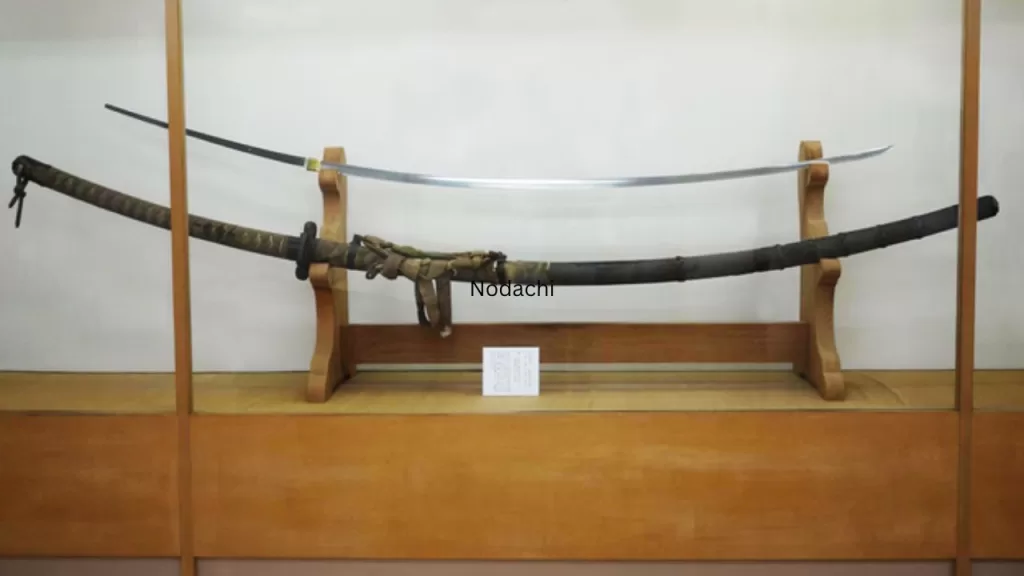
Nodachi Historical Background
The nodachi, also known as the odachi, is a traditional Japanese sword that dates back to the Kamakura period. It is a larger and longer version of the tachi, designed for use on the battlefield. The nodachi was primarily used by infantry soldiers to combat cavalry and enemy, foot soldiers, with its extended reach and powerful slashing capabilities making it an effective weapon in large-scale engagements.
Description of Nodachi
The nodachi features a curved, single-edged blade significantly longer than the tachi, with a blade length typically exceeding 90 centimeters. The sword has a circular or squared guard and a long grip for two-handed use. Due to its size and weight, the nodachi was often carried on the back or by a dedicated sword bearer rather than worn at the waist like the tachi or katana.
Nodachi in Popular Culture
The Nodachi, although not as frequently featured as the Katana or Wakizashi, has appeared in various forms of popular culture, including movies, anime, and video games. Some notable examples include:
Movies
- “13 Assassins” (film): The character Hirayama Kujūrō, portrayed by Tsuyoshi Ihara, wields a Nodachi in several battle scenes throughout the movie.
Anime
- “Bleach” (manga and anime series): The character Ōetsu Nimaiya, a member of the Royal Guard, wields a Nodachi called “Sayafushi” as his primary weapon.
- “InuYasha” (manga and anime series): The character Sesshōmaru, a powerful demon and the main character’s half-brother, initially uses a Nodachi called “Tōkijin” before switching to a more powerful weapon.
Video Games
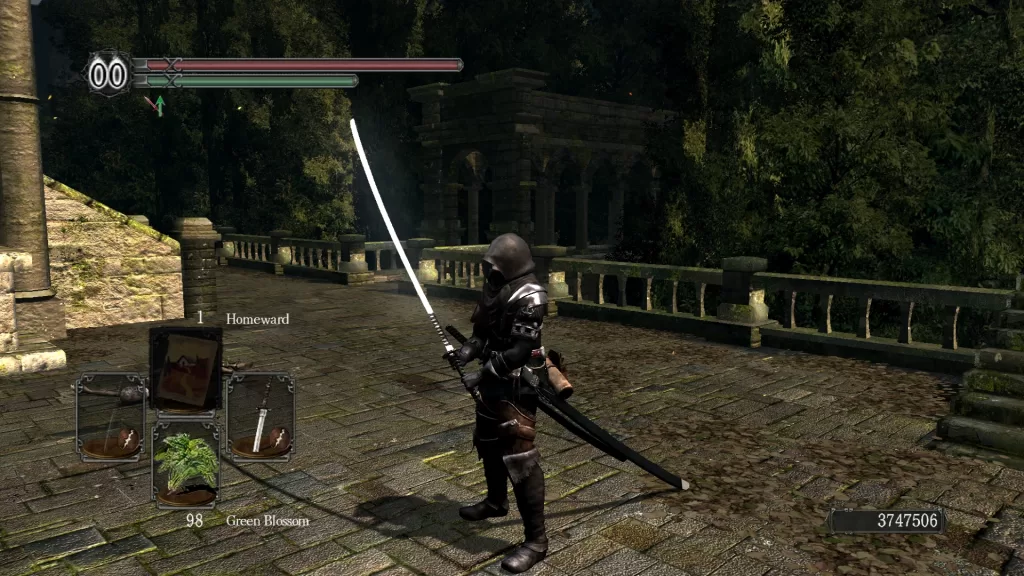
- “Dark Souls” (video game series): The “Nodachi” is a usable weapon in the game, known for its great reach and powerful slashing attacks.
- “For Honor” (video game): The Samurai faction’s “Kensei” class wields a Nodachi as their primary weapon, showcasing its range and striking power in battle.
Types of Nodachi Variations
The Nodachi has several variations, each with distinct features that cater to different uses or aesthetic preferences. Some of the most notable types include:
Ōdachi
The Ōdachi is a larger Nodachi version with a blade length that can exceed 90 cm (35 inches). This variation often requires a longer handle for proper balance and control, making it an imposing weapon on the battlefield.
Soshu Kitae Nodachi
The Soshu Kitae Nodachi is characterized by its unique forging technique, which involves layering different steel types to create a blade with both flexibility and cutting power. This style of Nodachi is highly sought after for its exceptional craftsmanship and performance.
Nagamaki-style Nodachi
This type of Nodachi features a blade similar to a Nagamaki, with a less pronounced curvature and a longer cutting edge. The Nagamaki-style Nodachi is known for its versatility and fluidity in combat, making it a popular choice among samurai and other warriors.
Nodachi Usage and Technique
The nodachi was primarily used for powerful slashing attacks, with its long blade allowing for sweeping cuts that could reach multiple enemies at once. Its extended reach also made it effective against cavalry, as infantry soldiers could strike at mounted opponents from a safer distance. However, due to its size and weight, the nodachi required considerable strength and skill to wield effectively, and its use was generally limited to highly trained warriors.
Nagamaki: The Hybrid Blade with Extended Reach
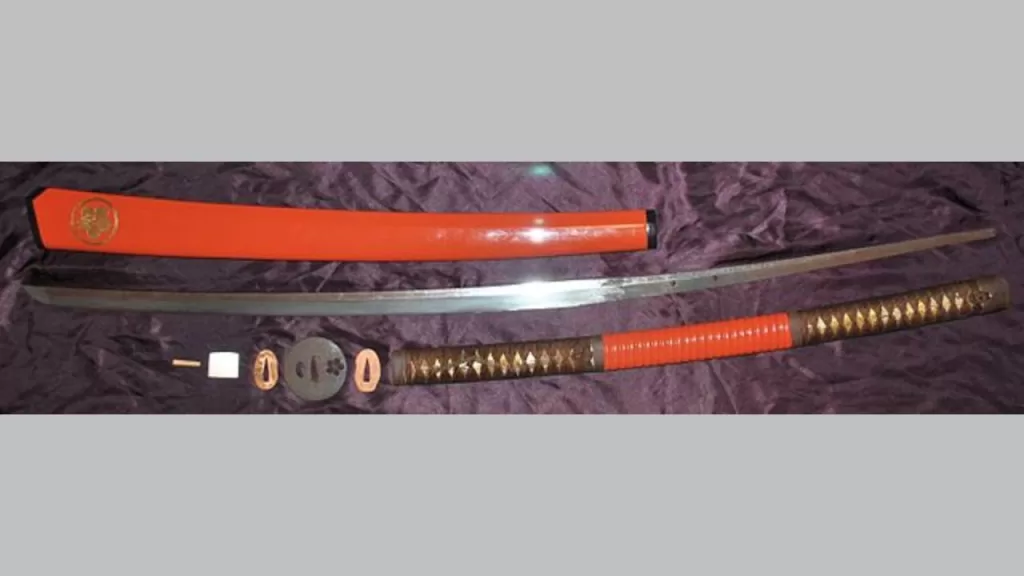
Origin and Development of the Nagamaki
The Nagamaki is a traditional Japanese sword that originated during the Kamakura period (1185–1333) and gained popularity in the Muromachi period (1336–1573). It is believed to have been developed by foot soldiers and infantry to counter cavalry charges and increase their reach on the battlefield.
Description of Nagamaki
The Nagamaki is characterized by its long handle, typically around the same length as the blade, and its single-edged, curved blade. The blade length usually ranges from 60 to 120 cm (24 to 47 inches), while the handle (tsuka) can be as long as 45 to 90 cm (18 to 35 inches). This design allows the wielder to generate more leverage and power when swinging the sword, making it highly effective in combat.
Nagamaki in Popular Culture
While the Nagamaki is not as prevalent in popular culture as other Japanese swords like the katana, it has appeared in various movies, anime, and video games. Examples include:
- “Sengoku Basara” (video game and anime series): Sanada Yukimura wields a Nagamaki as his primary weapon.
- “Nioh” (video game): The Nagamaki is one of the weapon types available to players.
- “Samurai Warriors” (video game series): Some characters use the Nagamaki as their weapon of choice.
Types of Nagamaki Variations
There are several variations of the Nagamaki, which differ mainly in blade curvature and handle length. Some of the most common types include:
Koshizori Nagamaki
This variation has a blade with a moderate curve and balancing, cutting, and thrusting capabilities.
Toriizori Nagamaki
This type has a more pronounced curvature, resembling a smaller version of the Nodachi or Odachi. This design prioritizes cutting power and slashing techniques.
Nagamaki Usage and Technique
The Nagamaki was primarily used by foot soldiers and infantry, who took advantage of its extended reach and leverage to fight against mounted opponents. Its long handle allowed powerful two-handed strikes, while its curved blade facilitated sweeping slashes and precise cuts.
Nagamaki Combat Techniques
Nagamaki combat techniques focused on leveraging the weapon’s reach and power, emphasizing sweeping cuts, powerful downward strikes, and thrusting attacks. In addition, footwork and body movement were crucial to maintaining balance and effectively executing techniques.
Nagamaki Preservation and Modern Practice
The Nagamaki is still practiced within the context of Japanese martial arts, although it is less common than other weapons like the katana or naginata. As a result, enthusiasts and collectors often seek out antique Nagamaki for their historical value and craftsmanship.
Naginata: The Versatile Polearm of Ancient Japan
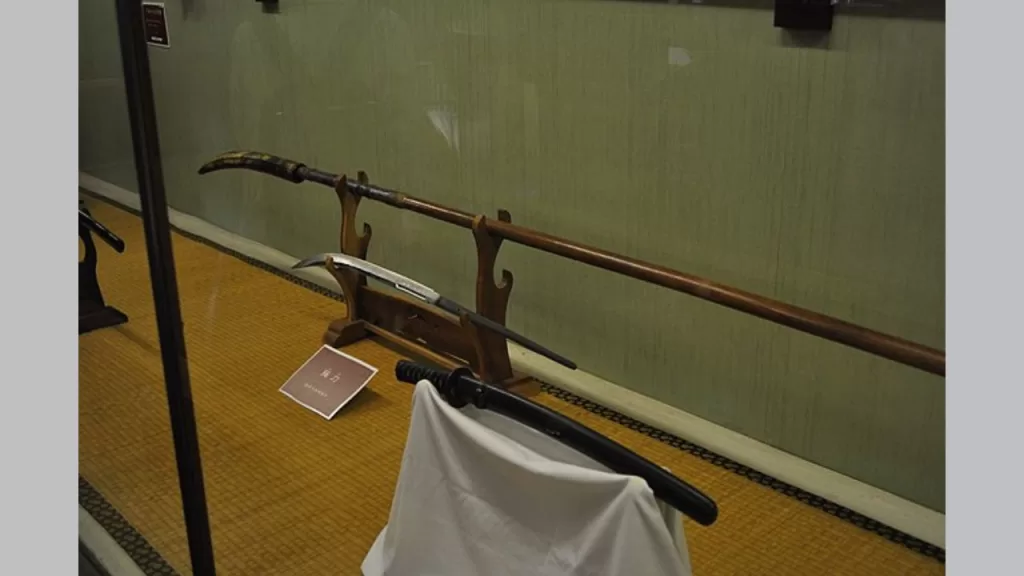
Emergence and Evolution of the Naginata
The Naginata, a traditional Japanese polearm, first appeared in the Heian period (794-1185). It gained prominence during the Kamakura period (1185-1333) and became a popular weapon throughout the Muromachi period (1336-1573). Initially used by samurai and warrior monks, the Naginata eventually became associated with female samurai, or onna-bugeisha, who employed it for self-defense and to protect their households.
Description of Naginata
The Naginata features a curved, single-edged blade mounted on a long wooden shaft. The blade length ranges from 30 to 60 cm (12 to 24 inches), while the shaft (nagaye) typically measures between 120 and 240 cm (47 to 94 inches). This combination provides the user with a significant reach advantage in combat.
Naginata in Popular Culture
The Naginata has been featured in various forms of popular culture, including movies, anime, and video games. Some examples include:

- Rurouni Kenshin” (manga and anime): The character Kamiya Kaoru is a skilled Naginata practitioner.
- “Princess Mononoke” (film): Lady Eboshi wields a Naginata in several scenes.
- “For Honor” (video game): The Samurai faction’s “Nobushi” class uses a Naginata as its primary weapon.
Types of Naginata Variations
The Naginata has undergone several changes in design throughout its history. Some common variations include:
Nagamaki-style Naginata
This type of Naginata has a blade similar to a Nagamaki, with a less pronounced curvature and a longer cutting edge.
Naginata with Tachi-style Blade
This variation features a blade with curvature and design resembling a Tachi, emphasizing cutting power and fluidity in combat.
Naginata Usage and Technique
The Naginata’s primary advantage lies in its reach and versatility. As a result, it was used by various types of warriors, including foot soldiers, samurai, and onna-bugeisha.
Naginata Combat Techniques
Naginata techniques emphasize fluidity and adaptability, combining slashing, thrusting, and sweeping movements. Users of the Naginata leverage the weapon’s length to maintain distance from their opponents and execute powerful strikes with the momentum generated by the shaft’s movement.
Notable Naginata Masters or Schools
Several traditional Japanese martial arts schools teach the use of the Naginata, including:
- Tendo-ryu Naginatajutsu: Founded in the 16th century, this school focuses on using the Naginata in conjunction with other weapons.
- Jikishinkage-ryu Naginatajutsu: A school that teaches the use of the Naginata as part of a broader curriculum, incorporating swordsmanship and other martial arts.
Naginata Preservation and Modern Practice
The Naginata is still practiced as part of Japanese martial arts, with schools like the All Japan Naginata Federation promoting its study and preservation. Additionally, antique Naginata are sought after by collectors for their historical significance and craftsmanship.
Yari: The Timeless Spear of Japanese Warriors

Development and Significance of the Yari
The Yari, a traditional Japanese spear, emerged during the Heian period (794-1185) and gained widespread use during the Kamakura (1185-1333) and Muromachi (1336-1573) periods. It became a favored weapon among samurai and foot soldiers due to its effectiveness in various combat situations and its relatively simple design and manufacturing process.
Description of Yari
The Yari consists of a straight, double-edged blade mounted on a wooden shaft. The blade can vary in length from 15 to 45 cm (6 to 18 inches), while the shaft (ebu) typically measures between 180 and 270 cm (71 to 106 inches). The Yari’s design prioritizes thrusting and penetration, making it highly effective against armored opponents.
Yari in Popular Culture
While not as prevalent in popular culture as other Japanese weapons, the Yari has appeared in movies, anime, and video games. Examples include:
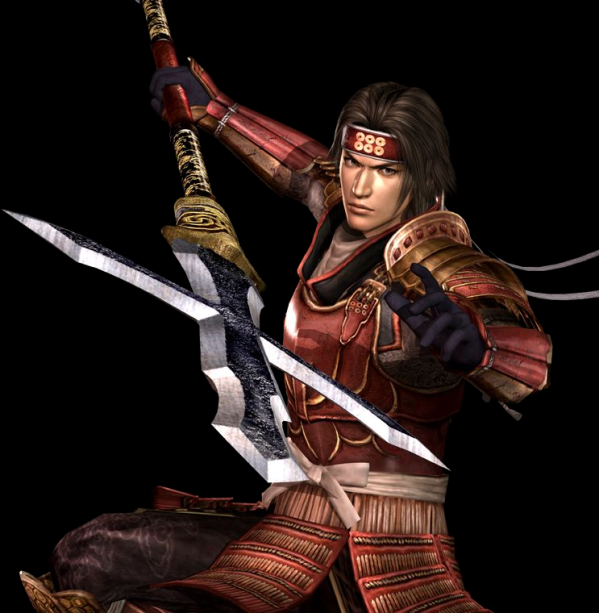
- “Seven Samurai” (film): Several characters in the movie wield Yari in combat scenes.
- “Samurai Warriors” (video game series): Some characters in the game use Yari as their primary weapon.
- “Nioh” (video game): The Yari is one of the weapon types available to players in the game.
Types of Yari Variations
There are numerous variations of the Yari, which differ primarily in blade shape and design. Some of the most common types include:
Sankaku Yari
This triangular-shaped Yari has a cross-section that forms a triangular prism, enhancing its penetrating power.
Ryo-shinogi Yari
This variation features a blade with two parallel ridges (shinogi) running down the center, which increases the blade’s rigidity and strength.
Jumonji Yari
This cross-shaped Yari has additional horizontal blades perpendicular to the main blade, increasing its cutting capabilities.
Yari Usage and Technique
The Yari’s primary purpose is thrusting, with its long reach and straight, double-edged blade making it highly effective in offensive and defensive situations.
Yari Combat Techniques
Yari techniques focus on maintaining proper distance from the opponent, using footwork and body movement to create openings for quick, powerful thrusts. Parrying and counter-thrusting are also essential components of Yari combat, emphasizing the weapon’s versatility and adaptability.
Notable Yari Masters or Schools
Several Japanese martial arts schools specialize in Yari techniques, including:
- Hozoin-ryu: Founded in the 16th century by Hozoin Kakuzenbo Inei, this school emphasizes using the Jumonji Yari and is known for its distinctive circular footwork.
- Oshikiuchi Yarijutsu: A school that teaches Yari techniques alongside other martial arts, focusing on effectively using the weapon in various combat situations.
Yari Preservation and Modern Practice
The practice of Yari techniques continues within the context of Japanese martial arts. The weapon is studied and preserved through traditional schools and organizations, such as the All Japan Yarijutsu Federation. Collectors also seek out antique Yari for their historical value and craftsmanship.
Stories You Will Also Like
Tourist Arrivals to Japan Plunge Amid Rumors of July 2025 Disaster
Japan Unveils Solar Super Panel Project Targeting Power Output Equal to 20 Nuclear Reactors
Honda Tadakatsu Japans Legendary Samurai Who Fought 55 Battles Without Injury